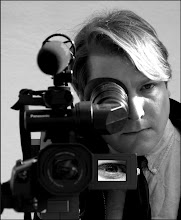LUND--Digital imaging has dealt photography a serious blow. Now believe it or not I am not a purist. If Joe Rosenthal had been able to carry a relatively small camera with all lenses imaginable up to the top of Mt. Suribachi along with cards capable of carrying a few thousand shots I'm sure he wouldn't have turned it down. Of course it does beg the question that, were he to have had all those options instead of waiting for the perfect moment with his Graflex 4x5, would he have taken, arguably, the best shot of WWII? But that isn't the question and if you want to carry around a large format camera for news work, then go right ahead.
But the serious blow to photography I am writing of is the ability to use a camera in the manual mode. Now before you start sniveling about how your camera can be set in all sorts of manual/landscape/ultra-portrait/more-Minolta-friendly modes than you can wag your swinging monopod at, I will simply say this: no camera, not a Nikon D3, a Nikon F5 or 6, no Canon EOS Mark Blahblah, can be quickly and efficiently set manually in the same way that any true manual camera can be utilized. The thumb-wheel/LCD screen controls cannot be used in the same intuitive manner that the shutter-speed dial/aperture ring/3-dot LED light meter system (or arguably match needle) because they were not designed to thus be used. A camera such as a D3 or F5 is designed to operate fully-automatically--auto-focus, auto-exposure--and to do it supremely well, to, quote one Nikon advertisement perhaps imperfectly, "Snatch Perfection from the Jaws of Chaos." And this these cameras do better year after year. And no one denies that they can be set in manual or any combination of mixed manual/automatic modes. But that is not what they are meant for and to do so is a conscious decision that takes extra time in order to achieve a specific result.
When one is familiar with the usage of a true manual camera, and I believe the best and highest form the manual camera ever took was in those with the three dot LED internal meter, one can, with practice, often operate surer and even faster than with a fully automated camera. And one can certainly finely adjust the vagaries of motion and depth-of-field faster. And one never loses a picture by having one's auto-focus confused and hunting (which, contrary to what the adds will have you believe, can happen with any auto-focus-wonder).
Which leads me to my point. Leica recently released the M8. It is almost exactly as I designed it myself. Shutter speed dial, aperture ring, metal body, simple light-meter, same shape. A true manual camera, with some automatic settings, in modern, high-resolution digital form. Granted it isn't perfect. It should, among other things, have a full-size sensor and a CF not an SD card, but for now that's quibbling.
But now Nikon needs to step up to the plate. They need to release a digital FM. Their FM and FM2 are, simply, the best manual SLRs ever made. Ever, in the history of humankind that is. Beyond solid, three-dot LED meter, will mount about any Nikon lens ever made and will work and work and work. Give photographers back a real tool, Mr. Nikon, whoever you are. Your F series was the best, from 1 through 6. Your D1 and 2 and now 3 are incredible. But make me a digital FM, made of steel and brass, with a sturdy but small back screen with a built in shade to protect it. And an F3 while you're at it. But first the FM.
Subscribe to:
Post Comments (Atom)



No comments:
Post a Comment